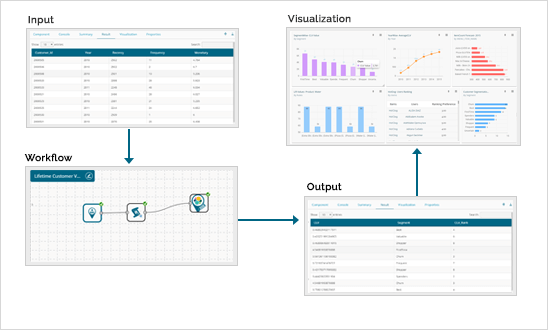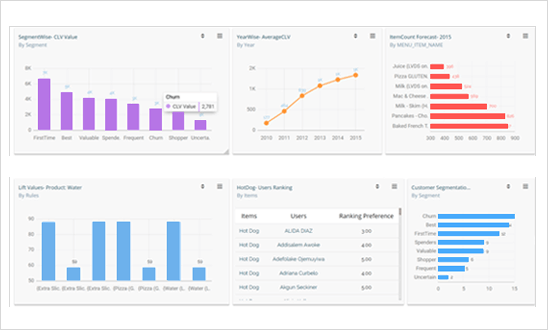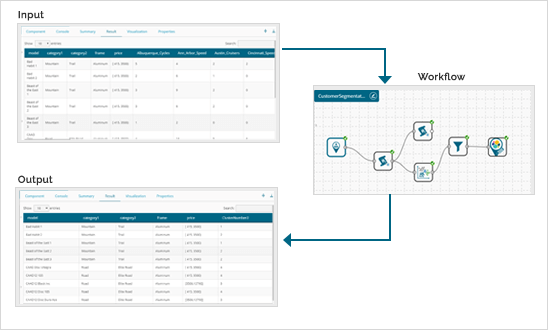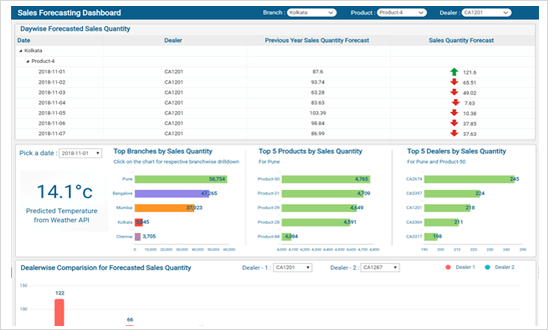Customer Analytics
Attain Accurate Customer Analytics




Customer segmentation is the process of dividing customers into groups based on common characteristics so companies can market to each group effectively and appropriately. A company might segment customers according to a wide range of factors.
As your business grows, segmenting your customers can significantly improve your marketing performance, making campaigns more relevant to more of your customers, ultimately increasing response rates and sales. In the long run, this benefits the company because they can use their corporate resources more effectively and make better strategic marketing decisions.


A customer-centric metric, and a powerful base to build upon to retain valuable customers, increase revenue from less valuable customers, and improve the customer experience overall. RFM Analysis is a proven direct marketing model for behavior-based customer segmentation. It groups customers based on their transaction history - how recently, how often and how much did they buy.
Description



A customer behavior analysis is a qualitative and quantitative observation of how customers interact with your company. It provides insight into the different variables that influence an audience. It also gives an idea of the motives, priorities, and decision-making methods being considered during the customer's journey.
Buying pattern refers to the typical way in which consumers buy goods or avail services- encompassing frequency, quantity, duration, timing etc.
Customers have different agendas and different concerns as that of a salesperson.


Survival analysis is generally defined as a set of methods for analyzing data where the outcome variable is the time until the occurrence of an event of interest. To understand length of time before an event occurs. To predict time till next event.
Description
The input data give time period of observation and various other parameters about the customers and predicting time till churn for the customers who have not churned yet.


Demanding forecasting is the use of data and analytics to predict as precisely as possible the customer demand for a specific period. Accurate demand forecasting is important to satisfy customers, minimize inventory costs and optimize cash flow.

Market Basket Analysis is one of the key techniques used by large retailers to uncover associations between products. It works by looking for combinations of items that occur together frequently in transactions. To put it another way, it allows retailers to identify relationships between the items that people buy. It is a theory that if you buy a certain group of items, you are more (or less) likely to buy another group of items.

Description:

Market share analysis is a part of market analysis and indicates how well a firm is doing in the marketplace compared to its competitors.




Using historical variations in price and purchase volumes to discover the optimal price to charge for different audiences at different times, optimizing profit and return on investment.

The probability of switching between different products is calculated based on the household level retail data. This helps in identifying the competition for each product.

An overlap analysis can be carried out to determine whether there is extensive overlap between the two products.
Description:
Input Data is the household level retail data and the percentage of buyers exclusively buying that product is given as output.

Customer Experience improvement efforts rely heavily on the Customer Feedback to help organizations know Where and How to do the improvements. Majorly, there are three categories


Conjoint analysis is a survey-based statistical technique used in market research that helps determine how people value different attributes (feature, function, benefits) that make up an individual product or service.
Description:
Input data Choice Based Survey Data (for computers in this case), it gives various combinations of attributes as choices and people choose out of these options.




Image Analytics is a logical analysis of information
found in image data using digital image processing
techniques.
Video Analytics is the capability of automatically
analyzing video to detect and determine events.

Description:
To Identify the Brand Logo in the image from the football clip.
Result:
It was successfully implemented with > (95-96)%




Its primary purpose is to indicate the level and direction of future business activity so that all teams and functions in a company have time to respond to changes.
Description:
Input data contains daily sales information with exogenous variables (e.g. Temperature) and sales forecasting has been done by using SARIMAX model.


Social Media Analytics
Social media analytics is the practice of gathering data from social media websites and analyzing that data to make business decisions. The most common use of social media analytics is to mine customer sentiment to support marketing and customer service activities.
Social media is a good medium to understand real-time consumer choices, intentions and sentiments. The most prevalent application of social media analytics is to get to know the customer base to help better target customer service and marketing.
There is a tremendous amount of information on social media today. In decades past, enterprises paid market research companies to poll consumers and conduct focus groups to get the kind of information that consumers now willingly post to public social media platforms.
Sense of Purpose
Models Used
-
Campaign Analytics
-
Sentiment Analytics
>In todays era, tracking your money spent along with the returns that the business gets out of the campaigns run on social media has become a need for every organization.
With our Campaign Analytics Solution, compare campaigns carried out on different platforms which will cater to the problem – Where & How much to invest?
Sense of Purpose
We believe it is important to classify incoming customer conversation about a brand based on 2 factors, Key aspects of a brand that customer care about., Users underlying intentions and reactions concerning those aspects. These concepts when used in combination, becomes a very important tool for analyzing millions of brand identity with human level accuracy.
The workflow takes tweets data as input and classifies these tweets as positive, negative and neutral based on LSTM based NN
Sense of Purpose